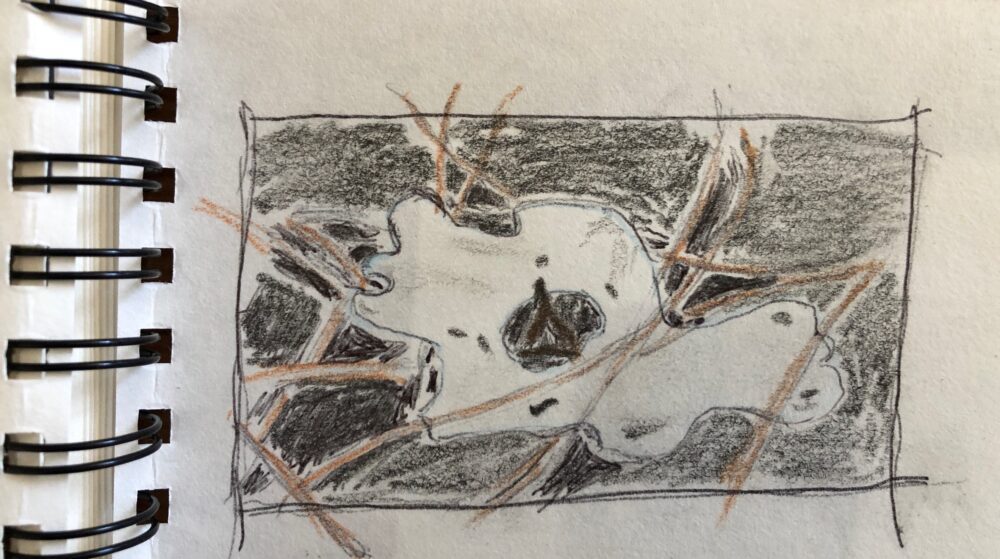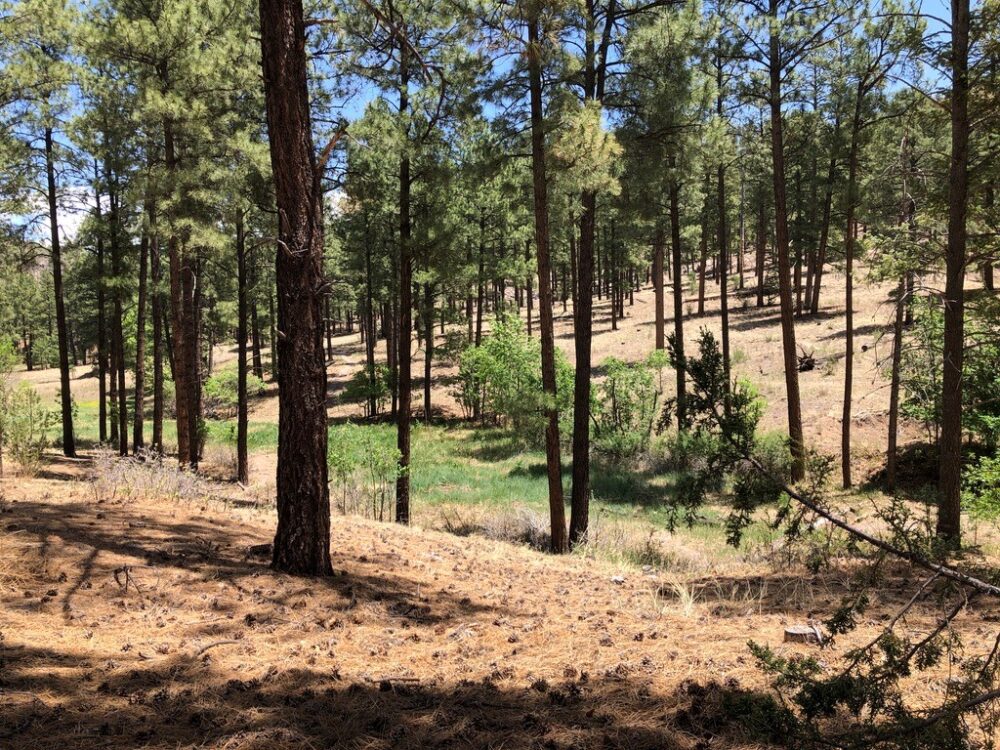By Sue Watts
Sometimes, the perfect IS the enemy of the good. There are times when we just don’t have the time to take 30 minutes or an hour to sit and absorb nature in our perching place. The good news is that the University of Derby in Great Britain, which has a major emphasis upon the importance of nature connections, discovered that even a few minutes spent daily in nature improved people’s feelings of connection with nature as well as their sense of well-being. Click here to learn what their research has discovered and how they are putting those discoveries into practice.
On a recent day, when the wind was blowing at only half the normal wind velocity, I took my lunch to a spot overlooking the Dot Grant trail just past the mailboxes on Range Road. There was a ponderosa tree outside the orange tape, barricading the trail, that provided a perfectly proper perching place.
I tried out a five-minute version of the perching place exercise. I decided to just sit, close my eyes, and remain open to whatever caught my attention for five minutes. I set my alarm for that time and used the techniques I’ve highlighted in previous blog entries. I noticed:
Touch:
- The cool feel of the wind on my cheek.
- The warmth of the sun on my right side and the cool of the shadow on my left.
- The prickly points from a squirrel midden of old ponderosa pine cones upon which I was sitting.
- The strength of the ponderosa supporting my back.
Sounds:
- The wind in the pines, which grew to a whispery roar, then ebbed.
- The wind in the junipers, which had a sharper, thinner tone.
- The call of a robin…or maybe it was a black-headed grosbeak…still learning to ID those confidently.
- The straight buzz of a fly circling my head.
- The swooping buzz of a broad-tailed hummingbird.
Smell:
- The delicious scent of the warm ponderosa pine bark…Vanilla? Butterscotch? I couldn’t decide.
- The unexpected smell of creosote…something from a construction project or the nearby cemetery?
Sight:
- By now, my eyes had been closed for some time, so I opened and shut them quickly (the quick lens) and the image produced was one of the swaying straight trunks of the ponderosas. I also noticed:
- The puzzle piece of a flake of ponderosa pine bark.
- The quick flash of a Western bluebird flying through the trees.
- The rounded clumps of deciduous trees nodding in the breeze.
- The contrasting textures of short and fine juniper “needles” and a softer broader, brighter green leaves of a deciduous tree…my “movie camera” lenses also noticed the different way the two branches moved.
- The bright green strip of the moister riparian area with a hazy patch of yellow flowers providing a water-colored spot of yellow.

Seriously, I noticed all of this in five minutes.
Obviously, it took a much longer time to recite what I had experienced. Since I was going to write this article, I made notes consisting of one or two words. Without that purpose, I would have just sat and soaked up the complete experience.
Is five minutes too much time for your busy schedule? Then try the advice of the University of Derby’s “Three Good Things in Nature”, and take time to notice three good things in nature each day. Sometimes, it helps to document them with your cell phone, and then you can share with us on the journaling blog. But, if you don’t have the time, notice anyway. Your life will be enriched with layers of nature.
The result of those five minutes spent overlooking the trail? I came away soothed and refreshed by the sights, the sounds, the smell, and the touch of nature. In my memory, it shines as a memory of connection and peace.

References:
Richardson, Miles. “Nature connectedness: A key metric for a sustainable future”. Finding Nature blog. https://findingnature.org.uk/. (accessed 6 June 2022)
Richardson, Miles and Sheffield, David. (2017) Three good things in nature: Noticing nearby nature brings sustained increases in connection with nature. Psyecology, 8 (1). 1-32.
